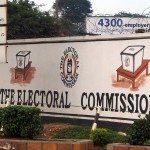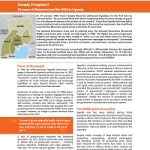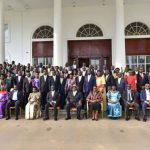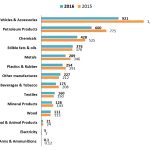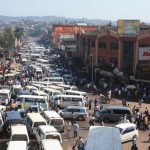This article was first published by The Sunrise and this edited version is republished here with the permission of the author.
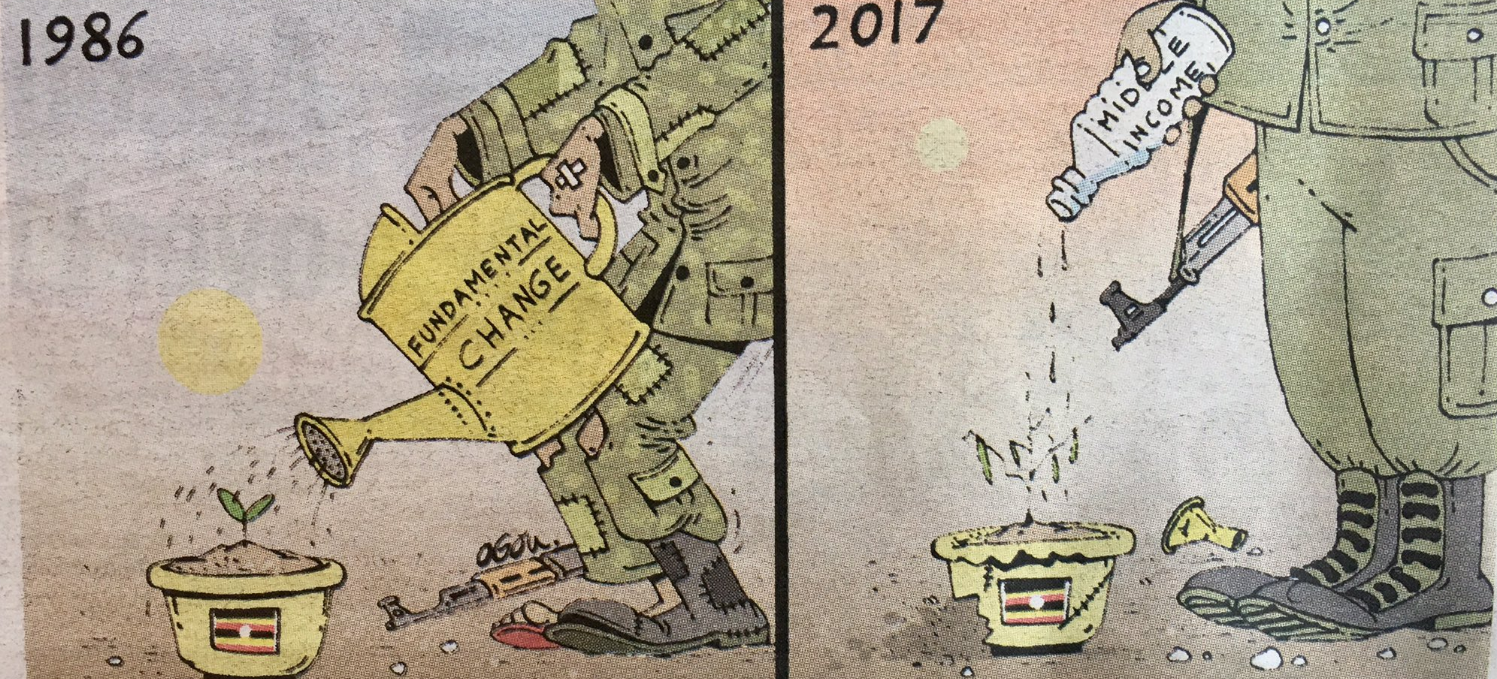
Cartoon by Atukwasize ChrisOgon published first in the Daily Monitor
There are two conflicting things lawyers often say. The first is, “You better have it (a contract, agreement or memoranda) in writing.” The second is, “If only my enemy had sent me a letter.”
We have all heard about the beauty of not putting it in writing. Why? Because the past often comes back to haunt you. This wisdom is as old as civilisation, yet it appears secluded for the brave men and women who liberated Uganda from the bad regimes of 1970s and early 1980s.
Mr. President, while in the bush in 1981–86, you and other colleagues of yours in the National Resistance Army (NRA)/National Resistance Movement (NRM) wrote what you called “The NRM ten-point programme”. Point five was aimed at “building an independent, integrated and self-sustaining national economy.” Under this point, the NRA/NRM decried the economic structure of the country you had inherited, which was dependent on the export of a few unprocessed crops such as coffee, cotton, tea, and tobacco (also known as CCTTs).
You also criticised previous governments, and the rest of Africa, for the failure to build manufacturing industries that used locally produced inputs. You identified four steps your government was going to take to change the situation. These were:
- Diversification in agriculture away from CCTTs
- An extensive import substitution in order to reduce the import bill, especially of basic consumer goods
- Processing of export raw materials to add value
- Building of basic industries
Mr. President, reading the ten-point programme and other policy documents, as well as the various speeches you gave in the early days of your presidency (compiled in your 1992 book “What is Africa’s Problem”), one can easily see why the NRM was a very popular party. You and your liberation war comrades had set out to do all the right things. The four steps you identified were well sequenced and pragmatically structured. They were not only desirable goals; they were also easily attainable.
The question, therefore, is why has the NRM failed to achieve this beautiful point in their programme?
Little value added, no diversification
I know you and some of your supporters would want to disagree with the verdict that the NRM has failed to “build an independent, integrated and self-sustaining national economy”, but let me present some of the facts. In 2016, Uganda’s total gross domestic product (GDP) stands at UGX93 trillion (US$26 billion), having risen from about UGX14 trillion (US$4 billion) in 1986 – a six-fold increase in the past 31 years. Kudos to the NRM. However, while Uganda’s GDP has expanded quite impressively the structure of the economy has not changed much.
As was the case in 1986, nearly 80% of Uganda’s exports today are still agricultural commodities, with coffee alone contributing nearly 20% and over a third of foreign exchange earnings. Other key foreign exchange earners for Uganda include maize, tobacco, tea, beans, sim-sim and cotton. This clearly shows that we have not succeeded in “processing of export raw materials to add value”, the third step to achieving point five of the ten-point programme.
Over the past three decades the NRM government has tried to diversify the agricultural exports away from the CCTTs – by introducing non-traditional exports such as flowers, fish, hides and maize, as well as improving tourism – but little has been achieved that is worth celebrating. If I were to award marks for the structural transformation of the economy, I would give the NRM 30%, 20% below the pass mark.
Trade and currency trouble
If one considers the recent change in policy, one may be right to say that we are moving in circles. Mr. President, under Operation Wealth Creation, you directed government and the hardworking men and women in military uniform to refocus on the production of coffee and tea. This contradicts the first step (diversification away from CCTTs) under point five of the NRM programme.
It is also in disagreement with economic theory that posits that CCTTs may not be as lucrative as common sense suggests since they have a low income elasticity of demand. They do not take advantage of individuals growing incomes. When people’s income rises, they do not substantially increase consumption of coffee or tea or tobacco, the way they would buy manufactured items. A billionaire drops one teabag or spoon of coffee in his cup, as does the low income earner seated on the next table.
Nevertheless, for a low technology and subsistence producing countries such as Uganda, it was imprudent to abandon the CCTTs and encourage people to produce annual crops (maize, beans, sim-sim) and “experimental” crops (vanilla, pepper, cocoa). Therefore, it is a wise move to correct this mistake.
On import substitution, to reduce the import bill, the NRM has failed. You found Uganda a net importer. In the past 31 years, Uganda has not only remained a net importer – of very low-skill manufactured goods such as toothpicks, candle wax and fruit juices – our trade balance deficit grew from UGX298 billion (US$83 million) in 1986 to UGX8.28 trillion (US$2.3 billion) in 2015.
As a result of this huge trade deficit, the value of the shilling has been eroded. In 1986, it required a Ugandan to pay only UGX44 to buy one US dollar. In 1990, when the first forex bureau was opened up in Kampala, starting the liberalisation process, the same Ugandan paid UGX436 for a dollar. Today, we are required to pay UGX3600 to purchase the same dollar! This is obscenely ridiculous.
The NRM’s failure to change the structure of the economy towards being self-sustaining is on account of a number of reasons. I will attempt to delineate them by citing what needs to be done to attain point five of the NRM programme.
A plan for the future
First, the NRM needs to stop writing policies and start implementing what is already on the shelves. When I was invited to Kyankwanzi (at the National Leadership Institute) last year to speak to the cabinet, the NRM top leadership and the permanent secretaries, I told them that the only policy that they needed to write was the policy on policy implementation.
Secondly, the NRM needs to carry out urgent reform of the civil service and politics of this country. There is a chaotic political-administrative interface: political leaders and technocrats can no longer work together. Little will be achieved if the status quo is maintained. The NRM needs to wake up to this reality and restructure government by closing some ministries, departments and agencies. There is a lot of duplication of roles and budgets, which has led public servants to pursue “mandates” instead of the national interest.
Thirdly, in order to develop the agricultural sector, a prerequisite for industrial and economic transformation, the government needs move away from the current supply side focus to a demand-driven strategy to elicit interest and responsibility from farmers. Government is wasting a lot of money giving planting materials to people who either do not need them or lack the incentive to use them productively. In addition, people will not commercialise agriculture on land whose rights are not protected. You must title people’s land to strengthen their rights so that they spend less time protecting their land instead of producing.
Fourthly, the NRM needs to invest in industry. Let us forget about the so-called private sector-led strategy. No country has ever been industrialised by private sector-led growth strategy. I know someone will quickly think about the industrial parks and other things government is doing, but these are scattered efforts which won’t achieve much. Contrary to the dogma of neo-liberalism worshipped by the economists at the Bank of Uganda that says private investment is supposed to be “good” while state investment is supposed to be “bad”, state investment has played a significant role in almost all the world’s fastest economically transforming countries. Although everywhere is different, East Asian economies have shown the world that economic success requires both the “invisible hand” and the “visible hand”.
Finally, to build an independent, integrated and self-sustaining national economy, the NRM will need a lot of Andrew Carnegie’s wisdom. He said, “As I grow older I pay less attention to what men say. I just watch what they do.” As leaders of the NRM celebrate the 31st anniversary of their stay in power, they need to do one thing: stop talking and get down to work. Stop reminding us how this is a kisanja hakuna muchezo (“a term without (political) games”) and let actions send the message. May I say happy anniversary to Mr. President and the entire NRM fraternity.
Ramathan Ggoobi is an economist and policy analyst. He teaches economics at Makerere University Business School, where he also heads an economic think-tank, MUBS Economic Forum.







